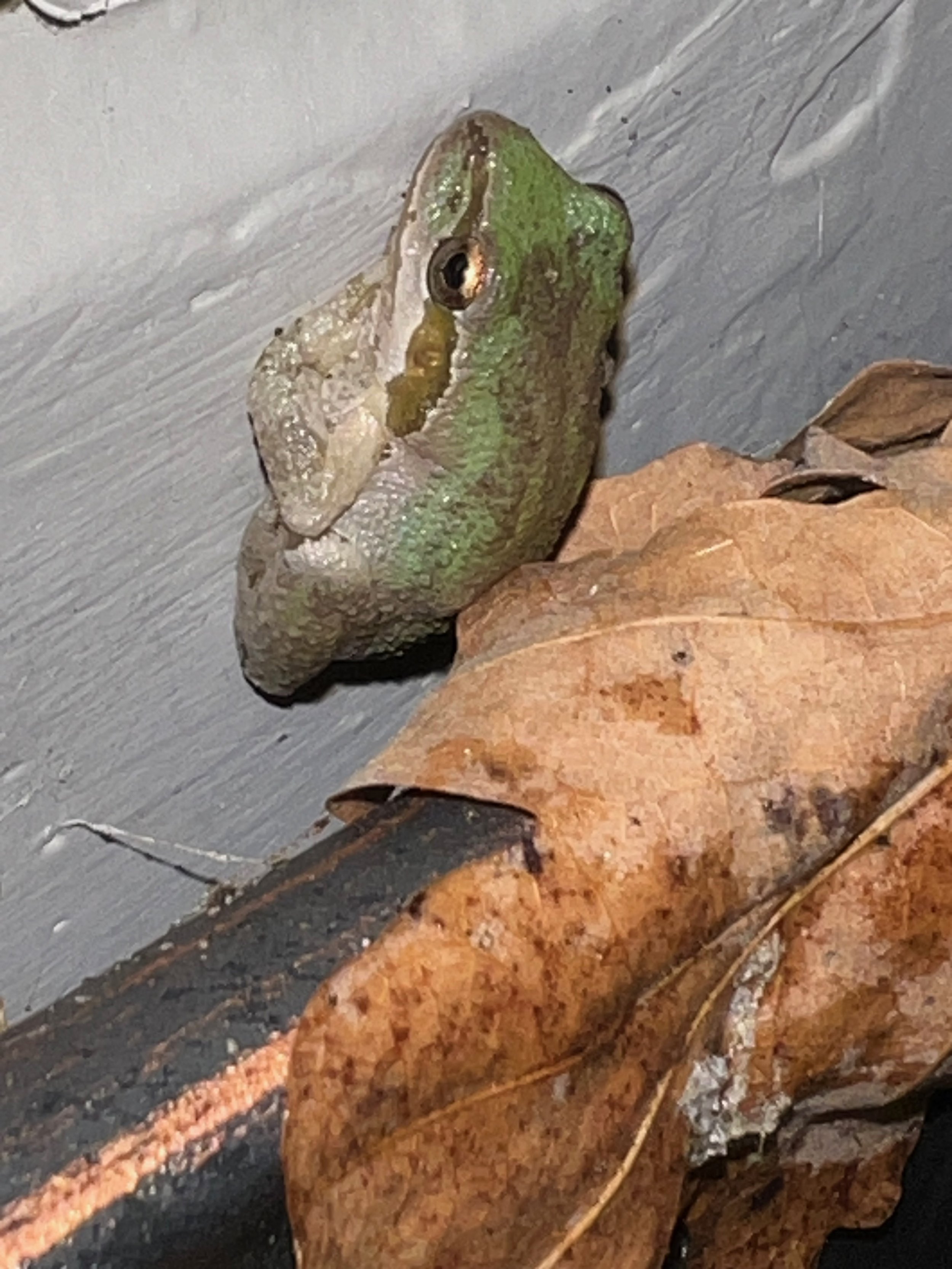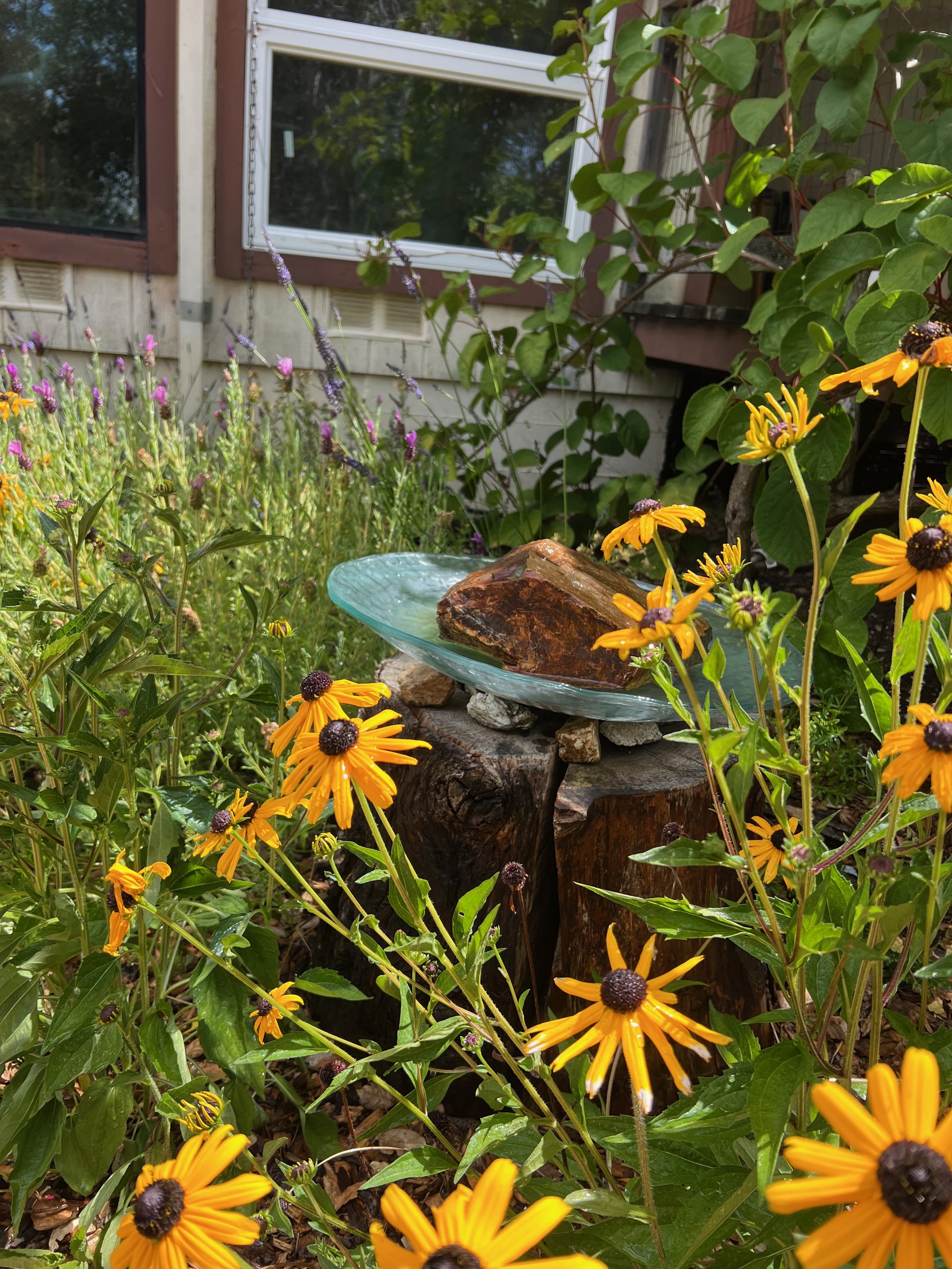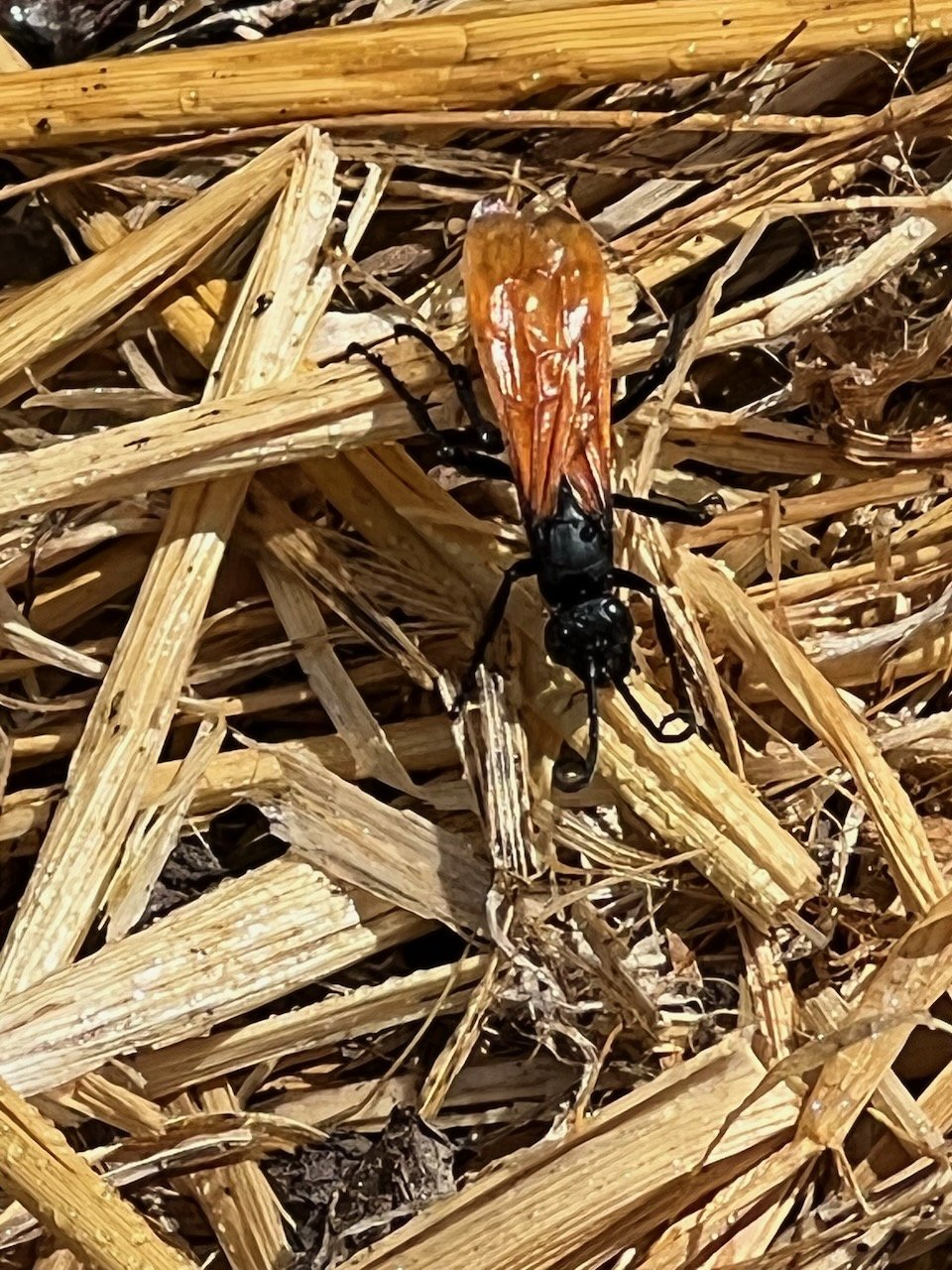A couple of nights ago, I was out watering the garden at dusk. It’s been quite hot here, and I’m finding that I need to water all my containers twice a day when it’s this warm. So there I was, making the rounds, when a little dark shadow popped up behind the seasoning celery/lobelia pot. At first I thought it was another black widow - the light was nearly gone and it was hard to see. I went inside to get my phone so I could take a look. Not a spider - a Pacific Chorus Frog!
Well, I was simply delighted, having never seen a frog in our garden before. We do not have a pond, only a water feature (a bubbling fountain with a large reserve of water underneath it). We do not have any excessively wet places, that I know of. We have found newts in the fountain area, and also under things like rain barrels, but that’s been infrequent. I don’t think of my garden as a good habitat for things that like cool wet places. So this was totally unexpected!
Pacific Chorus Frogs (also known as Pacific Tree Frogs) are found up and down the west coast, from British Columbia to Baja California, as far east as Montana; and from sea level to 10,000 feet, in anything from desert to redwood forests!
In this geographic range, there are two things that distinguish these frogs from other species: The presence of toe pads, and a dark stripe that extends from the nostril, through the eye, and past the ear. No other frogs found within the geographic range of the Pacific Chorus Frog have both of these characteristics. They are quite small, between 1-2 inches, though the females are larger than the males. Females have a smooth white throat while males have a wrinkly dark throat.
It’s hard to tell from my pictures, but I think this one is female. I’ve never heard any of the breeding calls this close to my house, and it’s also not breeding season, which is usually in spring through early summer. We do hear the males down near our creek, about 100 yards away from our house, at that time. They make quite a racket, but it’s a welcome racket!
Here’s the thing that’s really twisting my noodle: How did this frog end up in our garden? A neighbor a few doors down has a pond, but it seems like a long journey for such a little guy. Our water fountain’s water reserve is under 1/4” hardware mesh, so as far as we know, inaccessible. I suppose it’s possible that there’s a hole or something. I don’t know, it’s just a mystery! But I’m thrilled. This means our ecosystem here is healthy - it’s a good place to catch a meal. Lately I’ve been feeling very bummed out about the garden, because I have such little time to spend in it, but having a bit of a mess seems to be a good thing for biodiversity, which is cheering.
Reference: Michael F. Benard, Natural History of the Pacific Chorus Frog, Pseudocris regilla


















